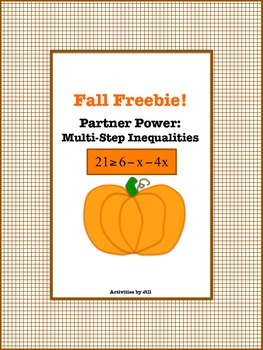Do you differentiate as often as you feel you should?
Sometimes the planning required to differentiate can be discouraging. If that's the case for you, start out simple. Differentiate by student choice, because kids love having alternatives. If you are concerned about leveled work, it is usually pretty easy to find lesson options at different ability levels even if you are primarily focusing on choice.
You might think this would be chaotic, but I've found it to be great for classroom management! In my experience, students are often much more focused on their work when the entire class is not working on the same assignment.
Begin by choosing a topic about which you have lots of resources available. Then, think about content, learning style, and grading.
Content
Begin with the end in mind.
- What do you want your students to have learned at the end of the lesson?
- Are your students at very different levels of understanding or at similar levels?
Learning Style/Interest
Provide choices.
- Do you need easy, medium, and challenging assignment choices?
- Is each assignment choice relevant to the topic and productive in terms of resulting in student learning?
- Are you offering enough variety to address different learning styles? Brainstorm resources you already have or ones that can be found or created easily.
- A traditional worksheet or textbook assignment is FINE. Some kids prefer this! Visual learners and kinesthetic learners thrive on activities that require drawing or coloring, cutting and pasting, using task cards, or completing a card sort. Partner activities are great for social and verbal learners. Students who love to read and write may be prefer to read about the topic and summarize it by writing about it, creating a product, or producing a digital display to demonstrate their learning.
- Don't get overwhelmed when brainstorming lesson options.
Grading/Planning
Keep it simple!
- Focus on the objective: What do you want your students to have learned at the end of the lesson?
- Realistically, about how many class periods should be allocated to completing the work?
- I decide on a reasonable number of class periods. Then, I make a final due date for all work a couple of days later. That allows students who work slowly to finish up outside of the classroom without a penalty. It also means that those who finish quickly are not left sitting around for a few days with nothing else to do.
- Making many of the lessons self check will make your life easier and allow students to get immediate feedback.
- I usually have students check in with me each time they complete an assignment. After checking it off as complete, I show them the answer key. They check their own work and let me know if they have questions about anything. I've found that this process keeps them honest and I am regularly touching base with every student.
- Should each student complete the same amount of work?
- Don't get stuck on this quantity versus quality issue. A lower ability student may complete a few relatively simple assignments while a higher level student only completes one or two more complicated tasks. That's ok! Other times, a lower ability student may take a long time to complete an assignment while a higher level student completes several. That's ok, too. It is hard to predict how this will work out. As long as your students are working and learning, they are progressing.
- How should I grade the work?
- As the teacher, you need to decide whether or not you feel that each student made a concerted effort to learn the material. After trying many grading methods over the years, I recommend that you either give a completion grade adjusted appropriately for effort and accuracy, or simply give an assessment (exit ticket) and grade that.
Tips for Success:
Remember, every student doesn't learn in the same way, in the same amount of time, or by completing the same number of assignments.
Advise students to choose lessons that are appropriate for them personally ... neither too easy nor too difficult. The goal is for them to learn, and they are all starting out at different levels! I have rarely had a problem with students choosing activities that are too easy. However, I so sometimes have to redirect students who select a lesson that is too difficult for them. Remind them that if they begin at the appropriate level, they will progress much more quickly!
 |
| Here is a great space-saving way to present lesson options when differentiating! |









































